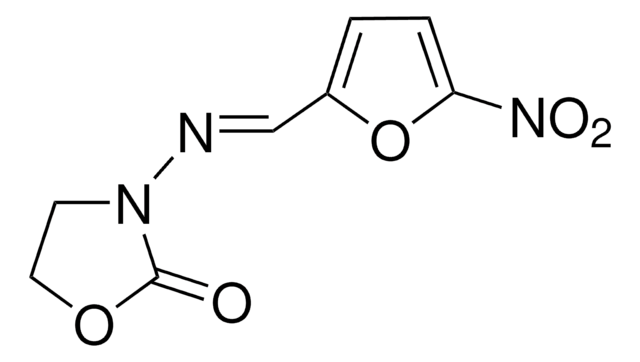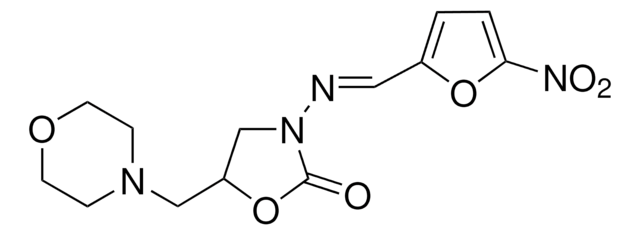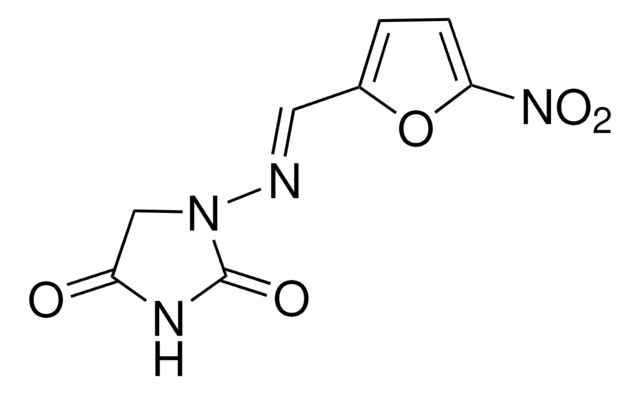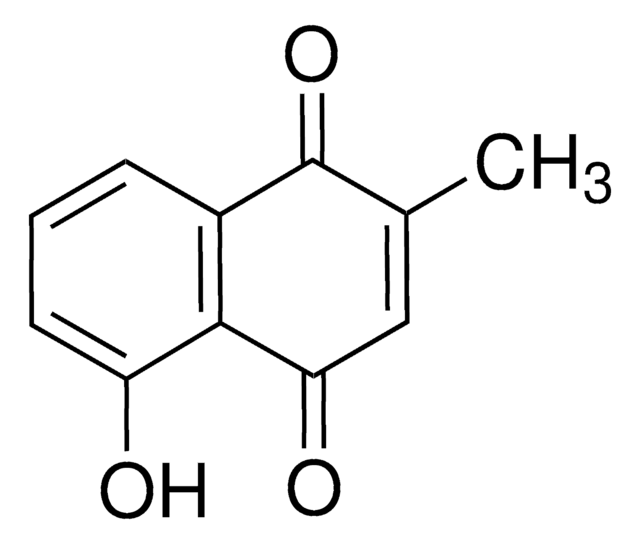Kluczowe dokumenty
F9130
Furaltadone
Synonim(y):
5-Morpholinomethyl-3-(5-nitrofurfurylideneamino)-2-oxazolidinone
About This Item
Polecane produkty
Poziom jakości
temp. przechowywania
2-8°C
ciąg SMILES
[O-][N+](=O)c1ccc(\C=N\N2CC(CN3CCOCC3)OC2=O)o1
InChI
1S/C13H16N4O6/c18-13-16(14-7-10-1-2-12(22-10)17(19)20)9-11(23-13)8-15-3-5-21-6-4-15/h1-2,7,11H,3-6,8-9H2/b14-7+
Klucz InChI
YVQVOQKFMFRVGR-VGOFMYFVSA-N
Szukasz podobnych produktów? Odwiedź Przewodnik dotyczący porównywania produktów
Opis ogólny
Zastosowanie
Działania biochem./fizjol.
Hasło ostrzegawcze
Warning
Zwroty wskazujące rodzaj zagrożenia
Zwroty wskazujące środki ostrożności
Klasyfikacja zagrożeń
Acute Tox. 4 Oral
Kod klasy składowania
11 - Combustible Solids
Klasa zagrożenia wodnego (WGK)
WGK 3
Temperatura zapłonu (°F)
Not applicable
Temperatura zapłonu (°C)
Not applicable
Środki ochrony indywidualnej
dust mask type N95 (US), Eyeshields, Gloves
Wybierz jedną z najnowszych wersji:
Certyfikaty analizy (CoA)
Nie widzisz odpowiedniej wersji?
Jeśli potrzebujesz konkretnej wersji, możesz wyszukać konkretny certyfikat według numeru partii lub serii.
Masz już ten produkt?
Dokumenty związane z niedawno zakupionymi produktami zostały zamieszczone w Bibliotece dokumentów.
Nasz zespół naukowców ma doświadczenie we wszystkich obszarach badań, w tym w naukach przyrodniczych, materiałoznawstwie, syntezie chemicznej, chromatografii, analityce i wielu innych dziedzinach.
Skontaktuj się z zespołem ds. pomocy technicznej







